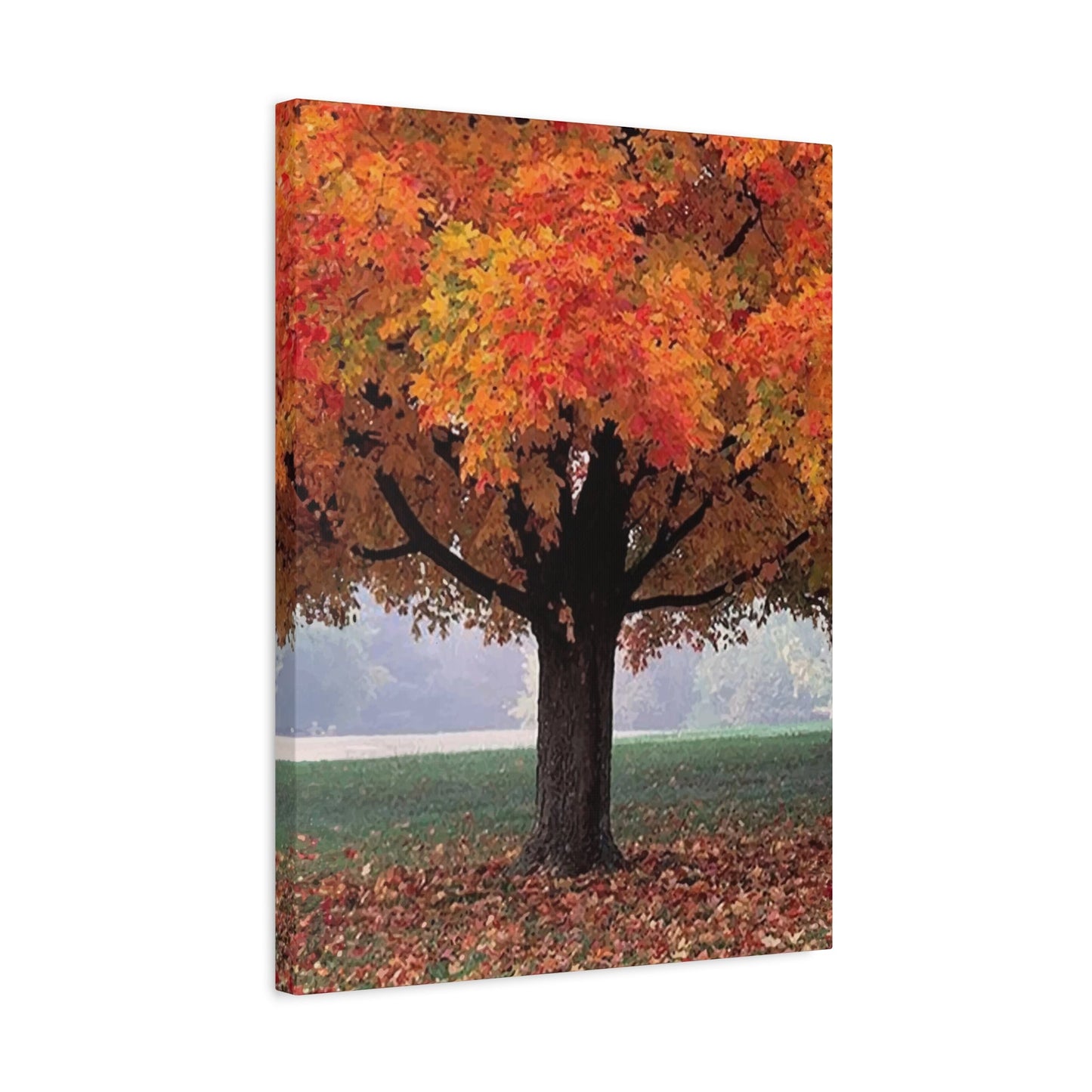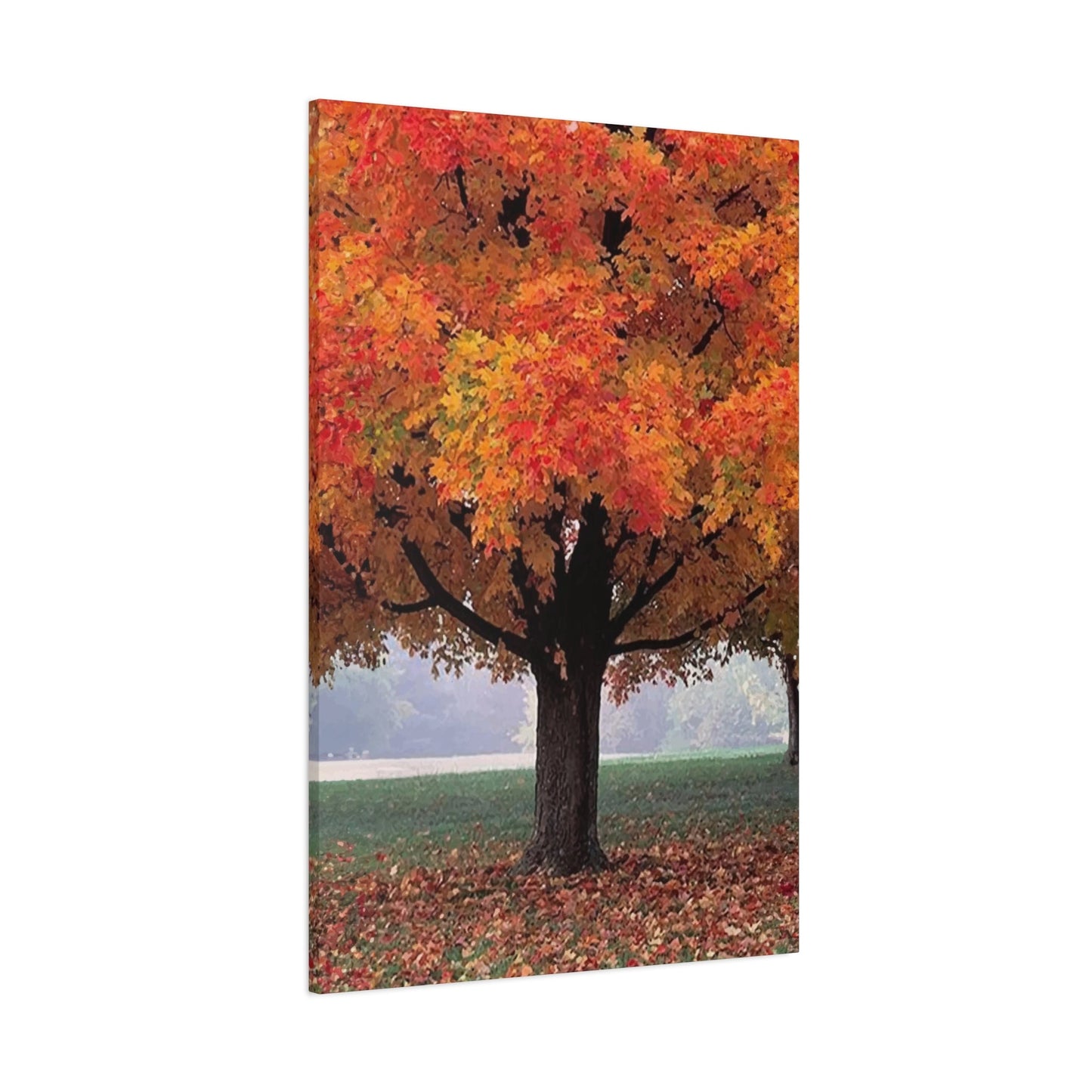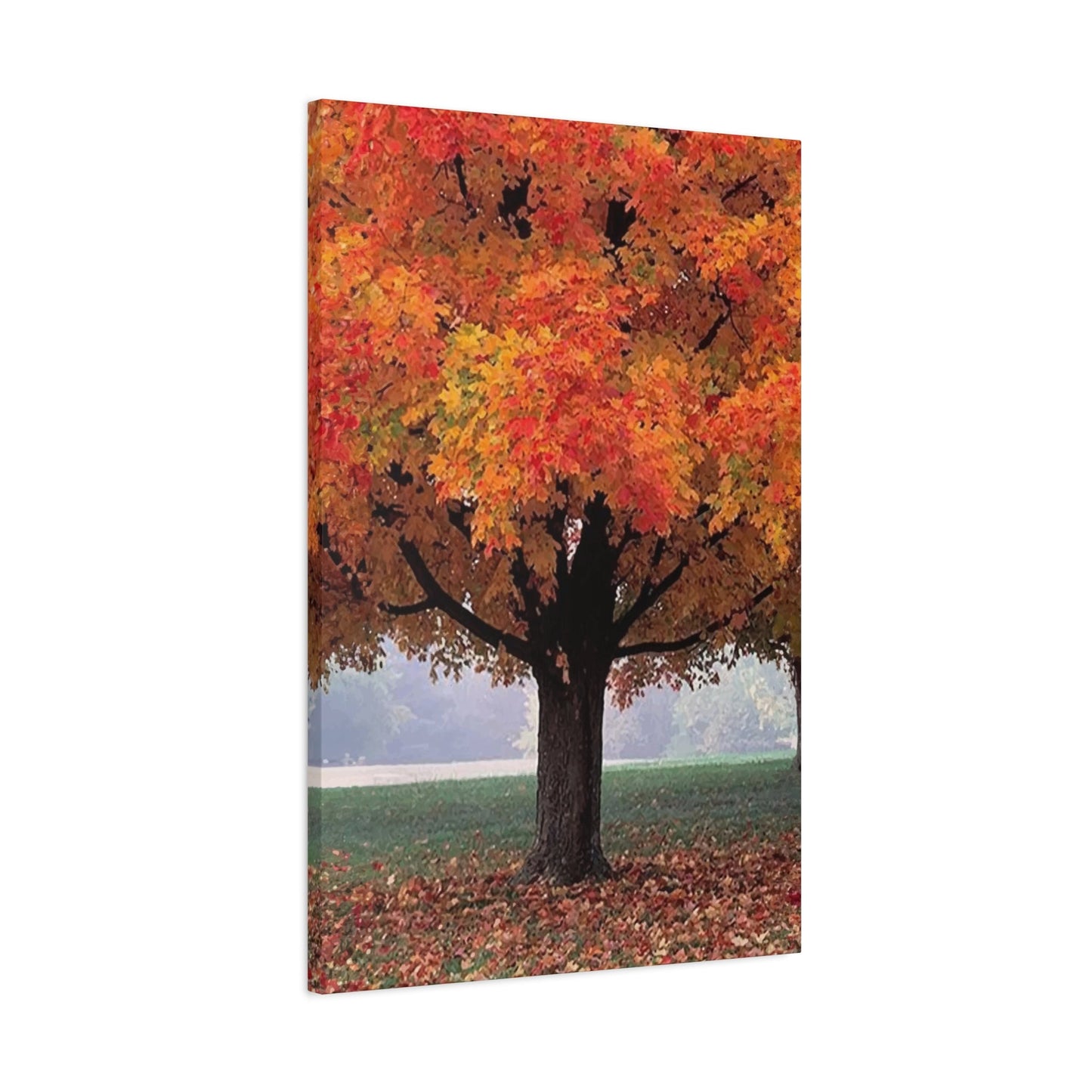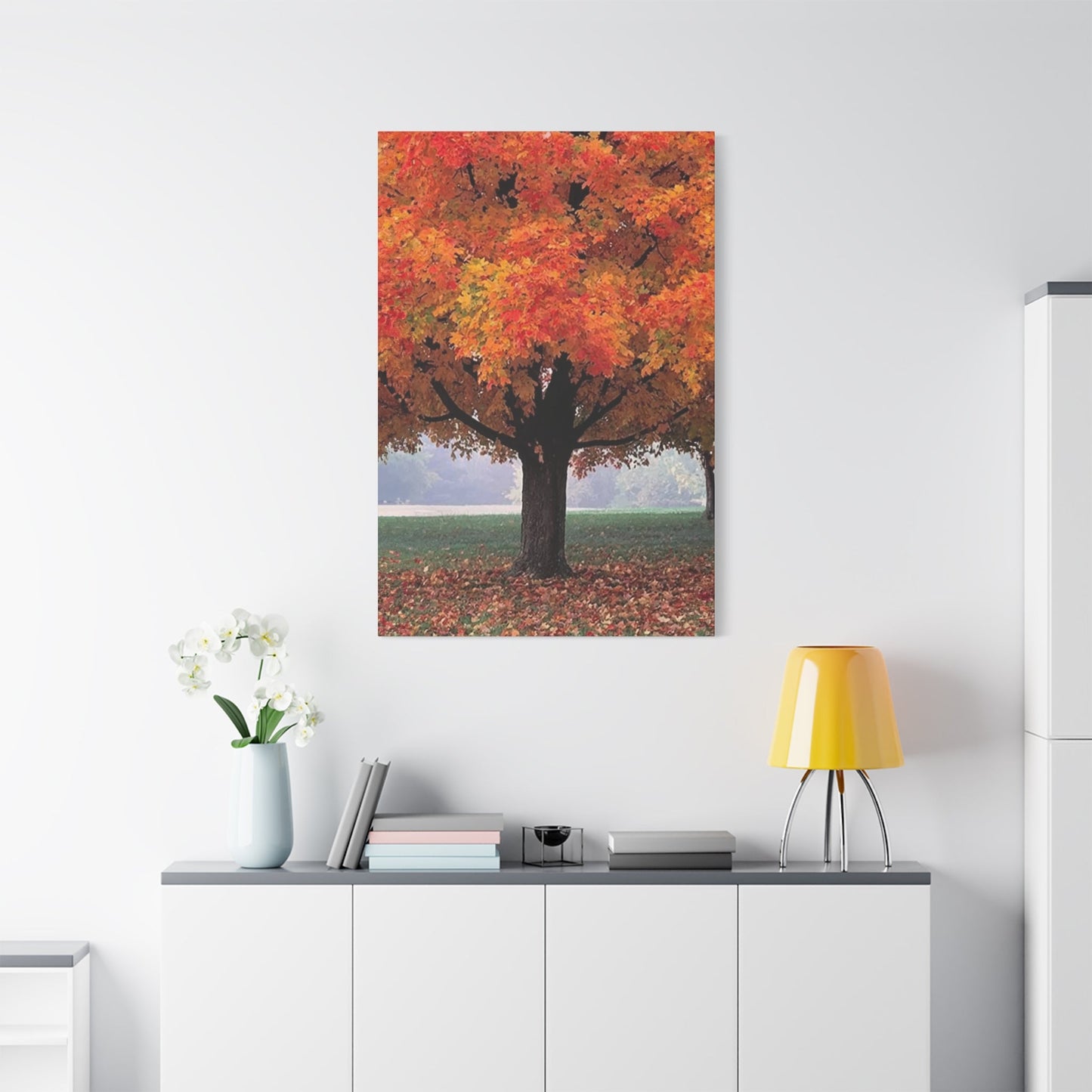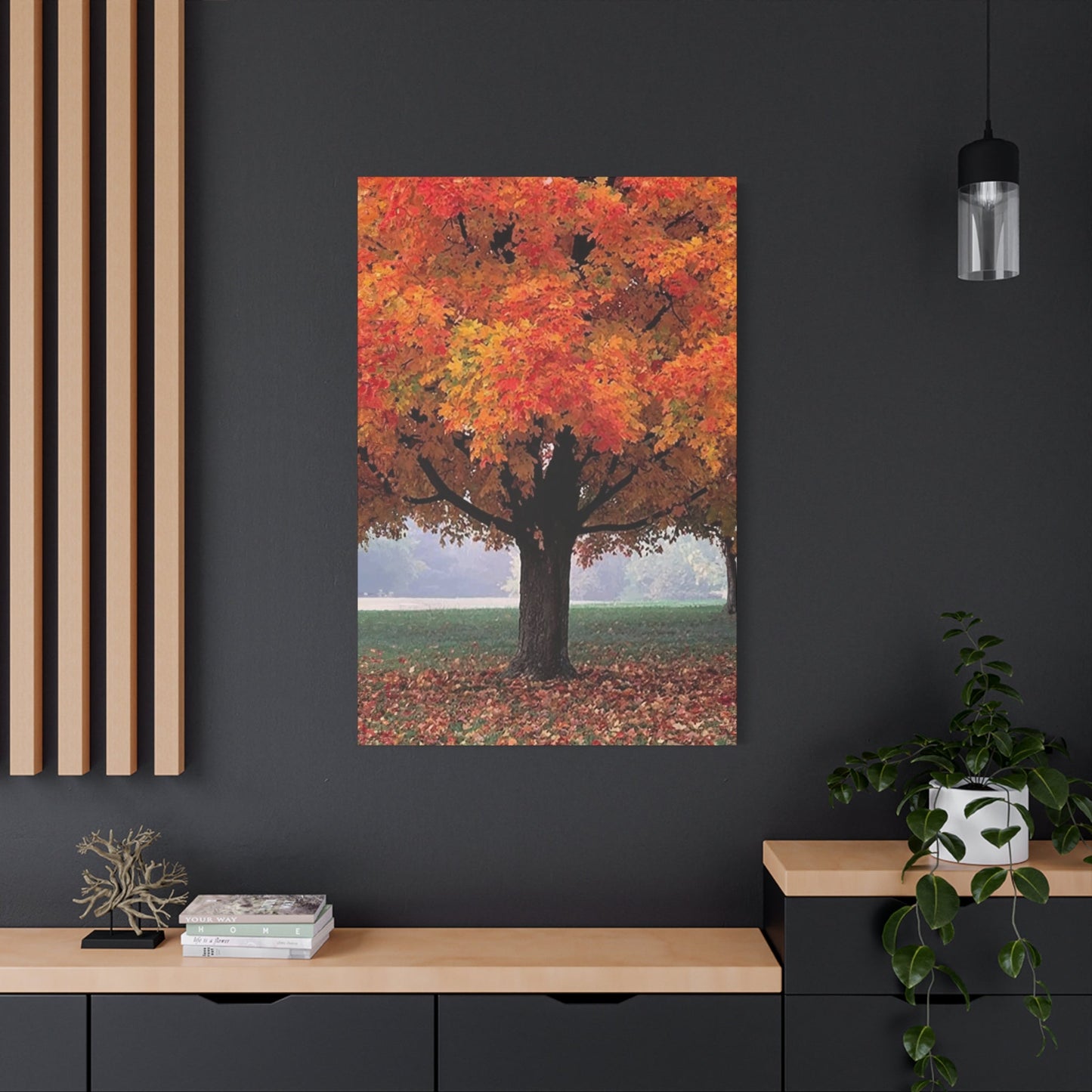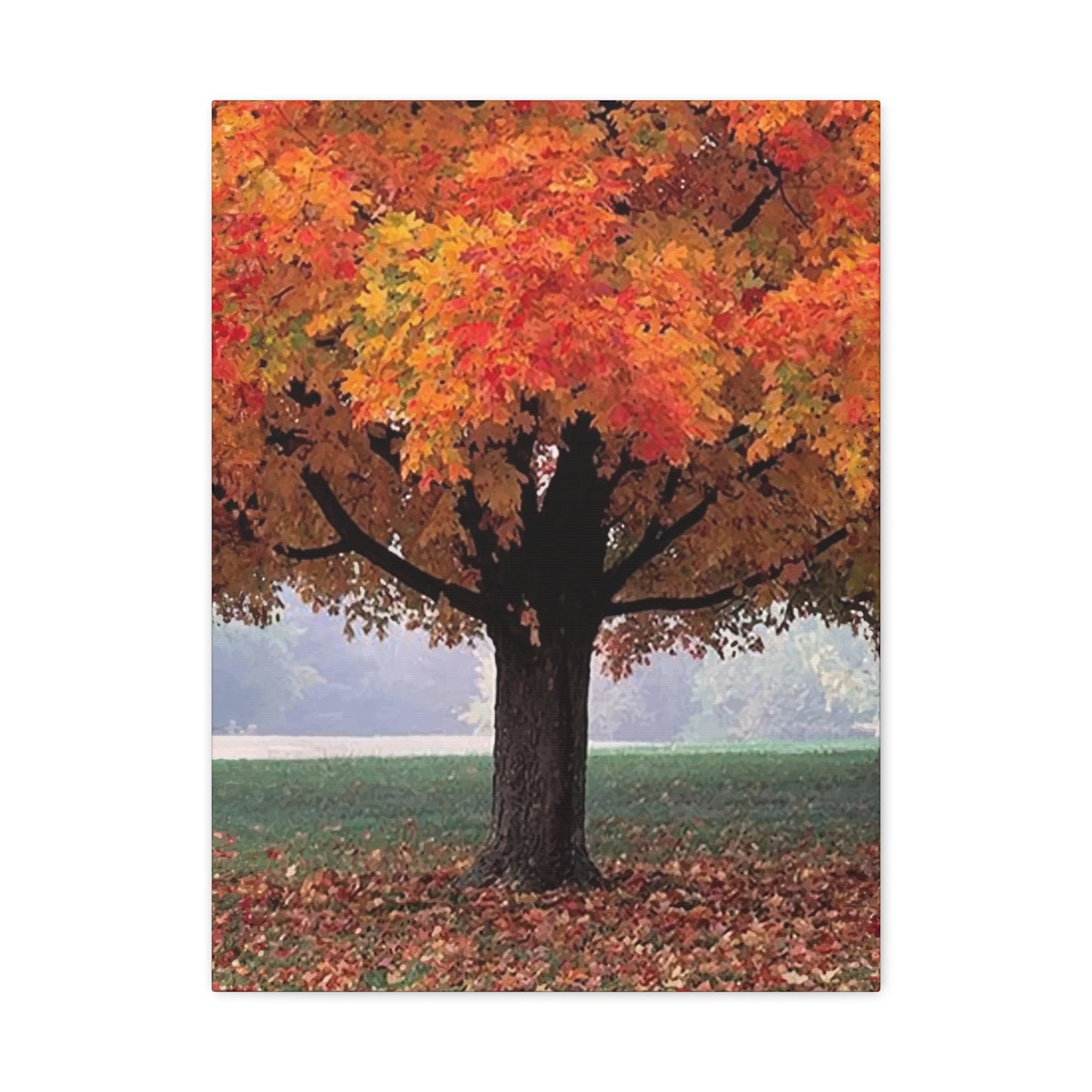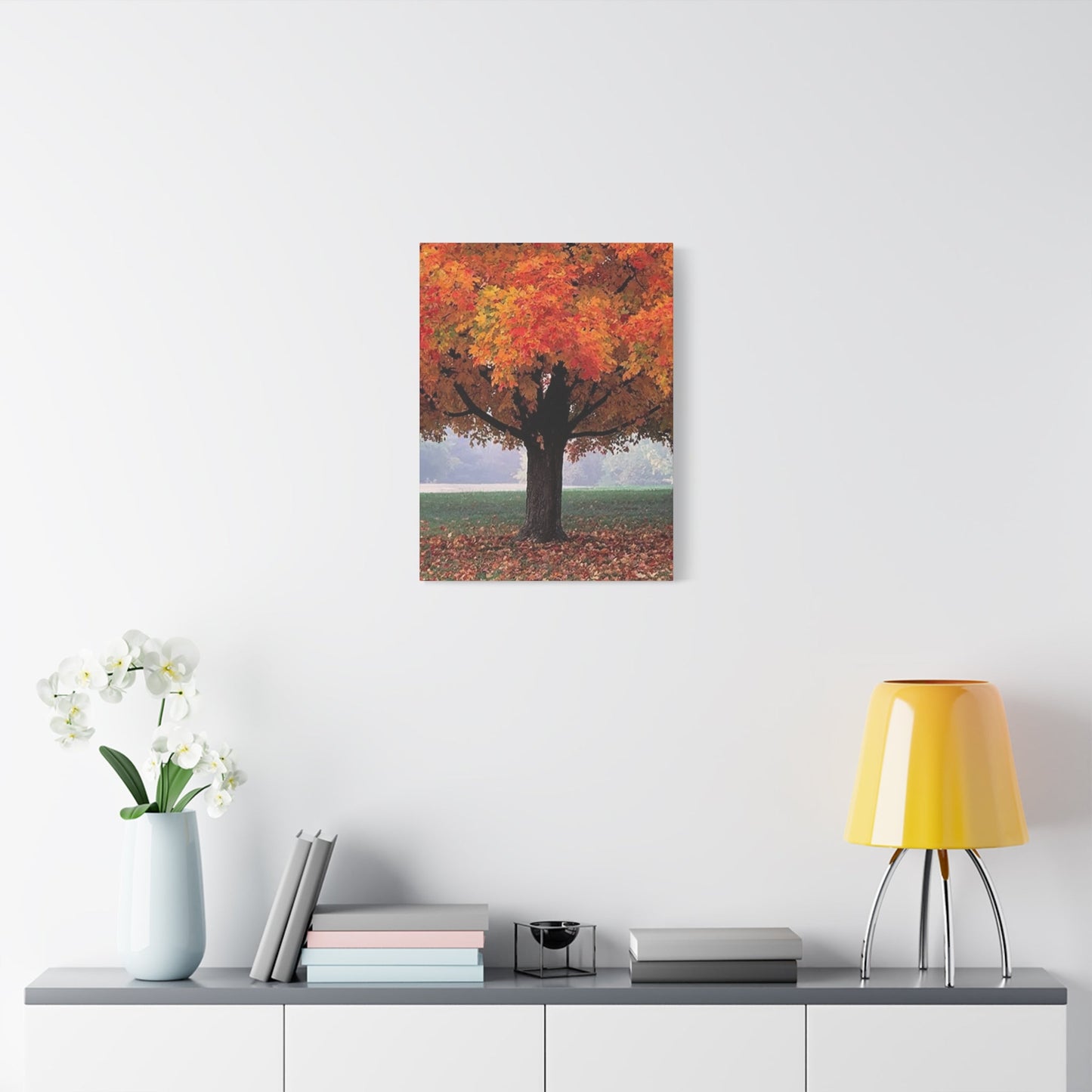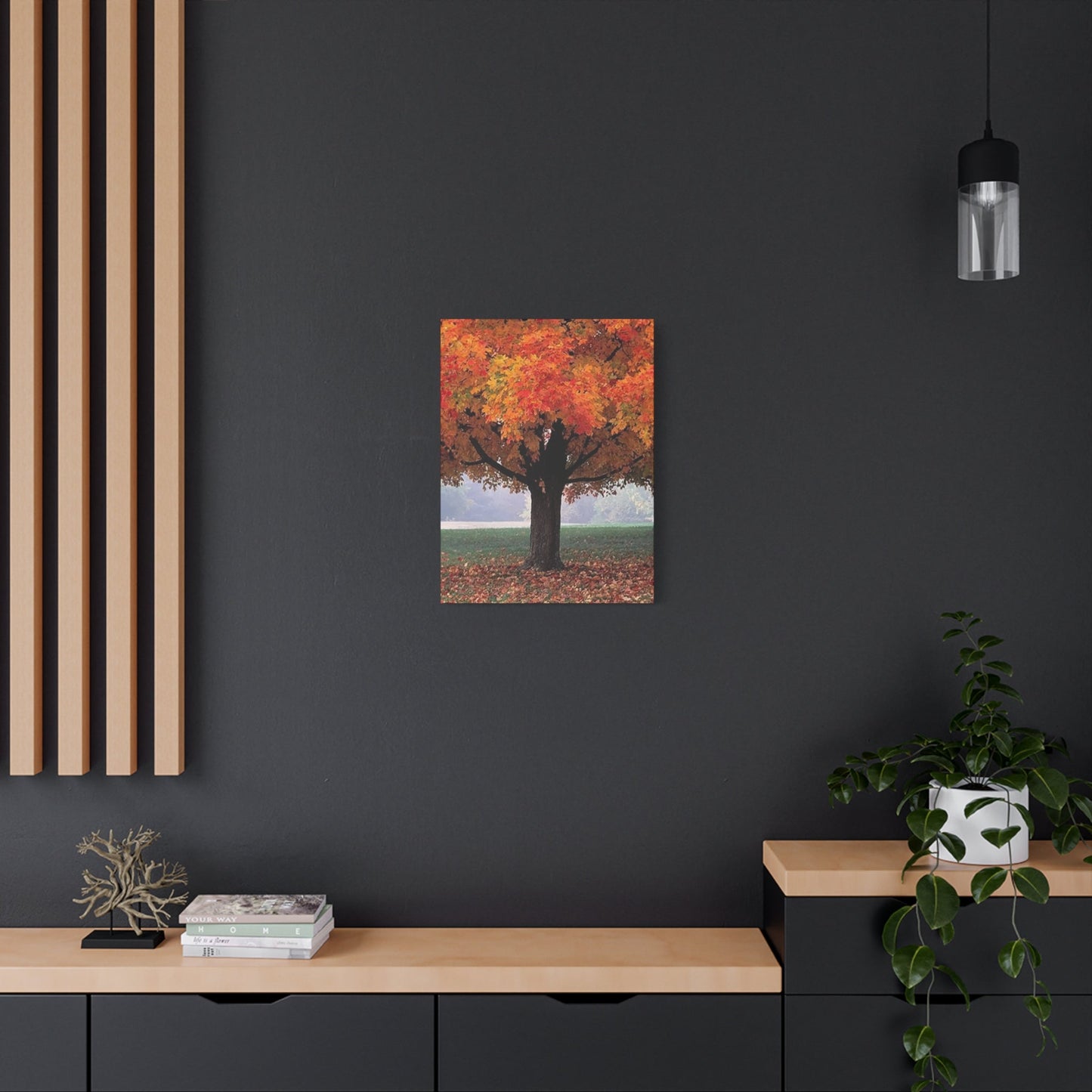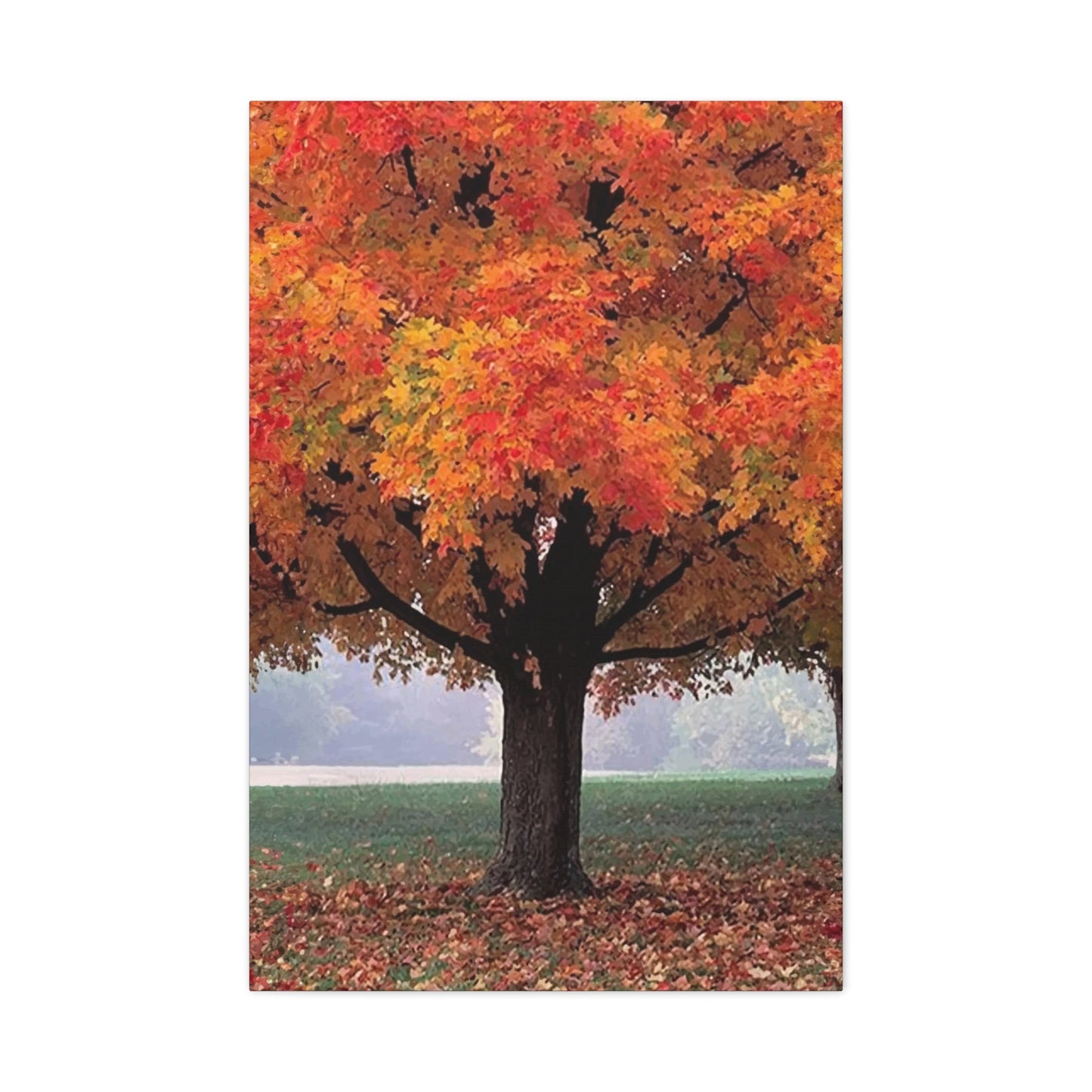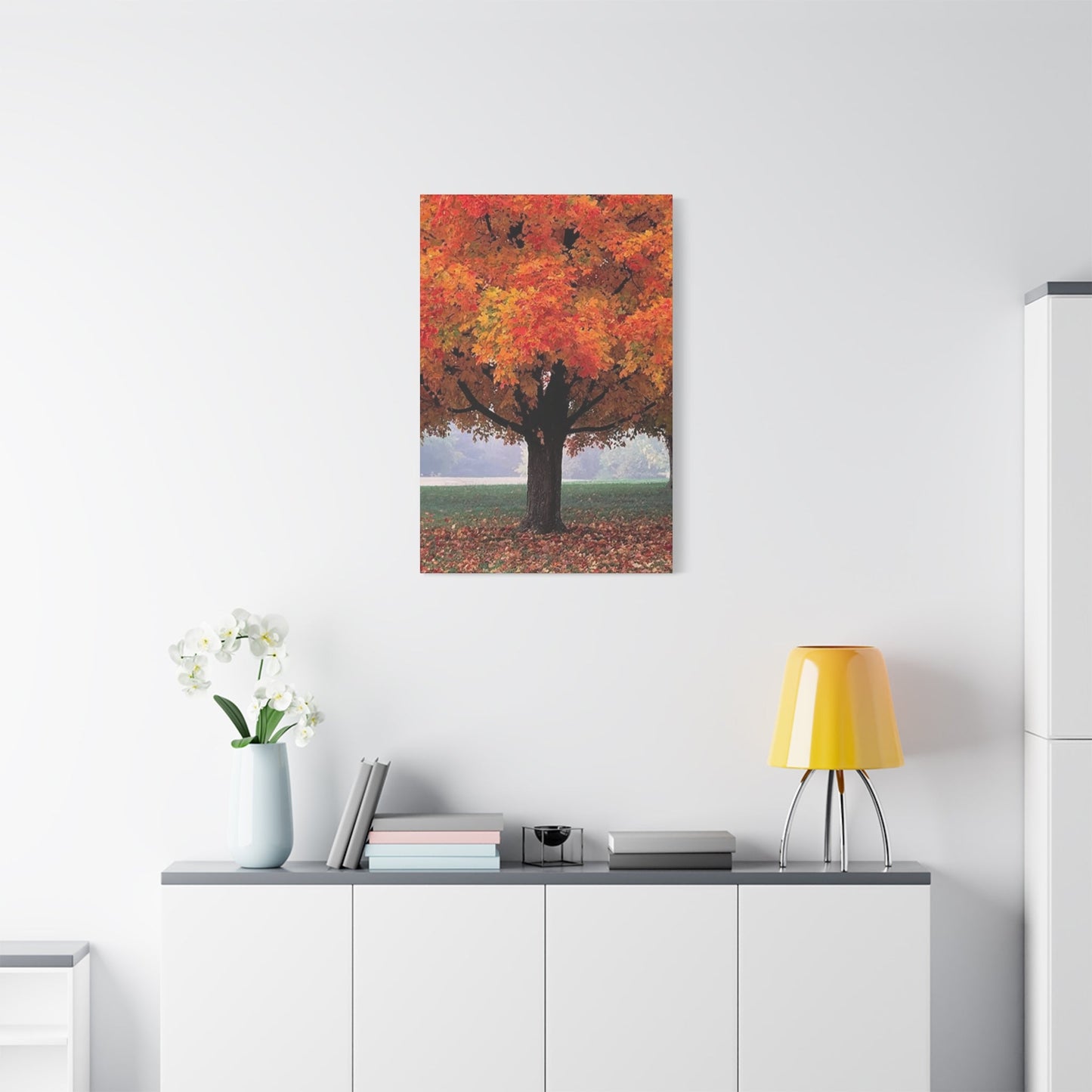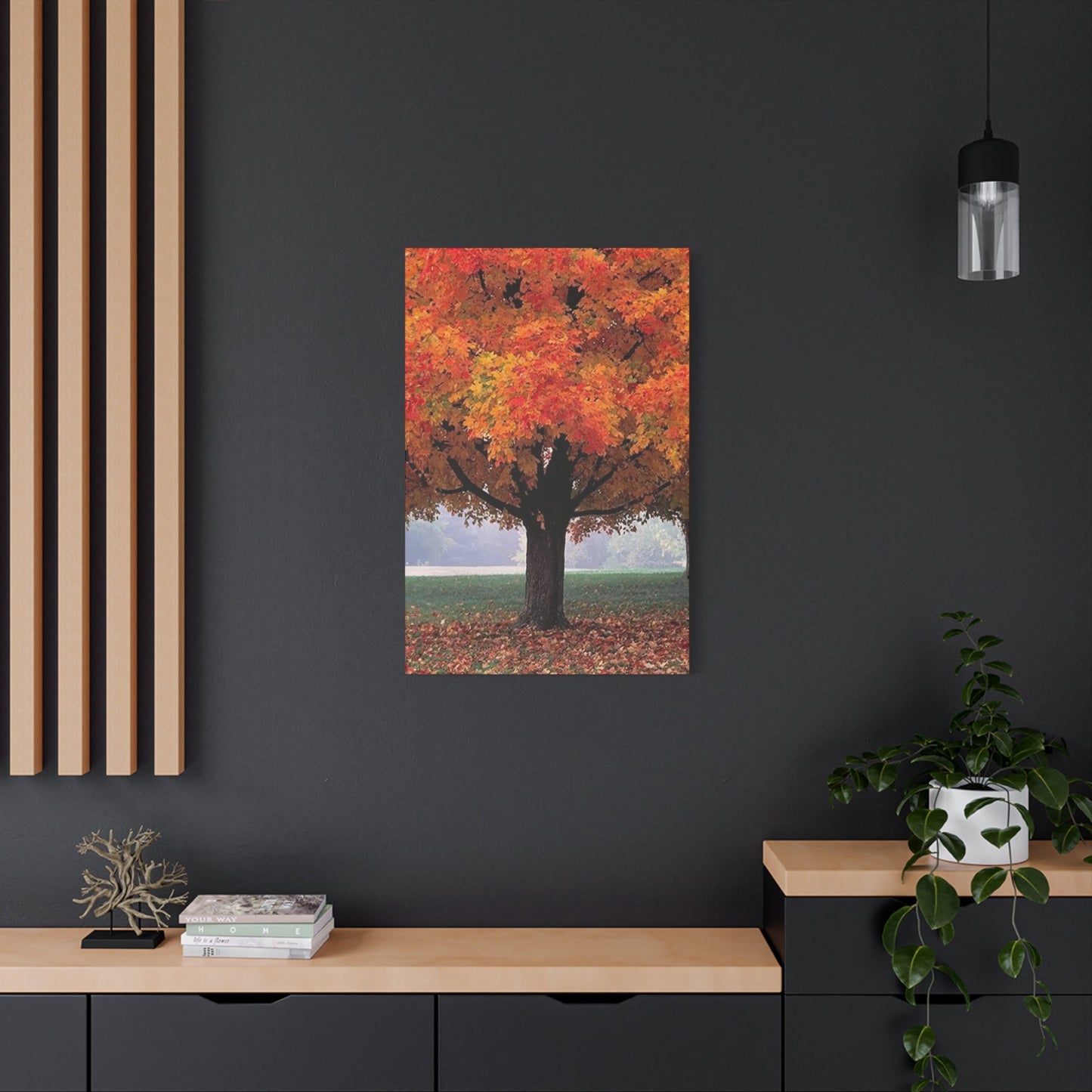Trees Wall Art: Bringing Nature's Beauty Into Your Home
Decorating your living space with nature-inspired artwork has become increasingly popular among homeowners and interior design enthusiasts. Among the various natural elements that people choose to display, tree imagery stands out as a timeless and versatile option that brings warmth, life, and tranquility to any room. Whether you're drawn to realistic forest photography, abstract interpretations, or minimalist silhouettes, incorporating botanical visuals into your interior design creates an instant connection to the outdoors while enhancing the overall aesthetic appeal of your home.
The appeal of tree-themed artwork extends beyond mere decoration. These pieces serve as windows to nature, especially for urban dwellers who may not have easy access to green spaces. They remind us of the changing seasons, the steadfastness of growth, and the beauty of organic forms. From sprawling oak branches to delicate cherry blossoms, tree imagery can transform a plain wall into a focal point that captures attention and sparks conversation.
In this comprehensive exploration, we'll delve into every aspect of selecting, styling, and displaying tree-inspired artwork in your home. Whether you're furnishing a new apartment, refreshing a tired room, or searching for that perfect finishing touch, understanding the diverse world of botanical wall decorations will help you make informed choices that reflect your personal style while creating spaces that feel both inviting and harmonious.
Botanical Artwork Designed for Enthusiasts of the Natural World
For those who feel most at peace surrounded by greenery and natural beauty, incorporating tree-themed artwork into your living space offers a daily dose of the outdoors. Nature enthusiasts often find that bringing elements of the forest indoors helps maintain their connection to the environment they love, regardless of weather conditions or urban limitations.
Selecting artwork that features trees specifically appeals to individuals who appreciate the majesty and symbolism of these living giants. Trees represent growth, strength, and endurance across countless cultures and traditions. They stand as silent witnesses to the passage of time, changing with the seasons while maintaining their essential character. When you choose to display tree imagery in your home, you're not just adding decoration but inviting these powerful symbols into your daily environment.
The market offers an extensive range of botanical artwork tailored to different preferences and styles. Some pieces showcase individual specimens in all their detailed glory, highlighting the unique characteristics of specific species. Others present entire forests or groves, creating immersive scenes that transport viewers to peaceful woodland settings. The variety ensures that every nature lover can find artwork that resonates with their particular connection to the natural world.
When selecting pieces for your space, consider which aspects of trees speak most strongly to you. Are you drawn to the gnarled wisdom of ancient specimens, the delicate beauty of spring blossoms, or the stark elegance of winter branches? Your personal connection to these elements will guide you toward artwork that feels authentic and meaningful rather than merely decorative.
Photography-based options provide realistic representations that can make you feel as though you're gazing through a window into an actual forest. These pieces work exceptionally well for individuals who crave that direct visual connection to nature. The detail captured in high-quality photography brings texture, color, and depth that can almost make you hear rustling leaves or smell fresh pine.
Illustrated and painted options offer different advantages, allowing for creative interpretation and artistic expression. These pieces might emphasize certain features, employ unexpected color palettes, or present trees in ways that reveal new perspectives on familiar forms. For nature enthusiasts with an appreciation for artistic interpretation, these works can provide fresh insights into the beauty they already cherish.
Dimensional pieces, including carved wooden art or metal sculptures, add another layer of engagement by incorporating actual texture and shadow play. These three-dimensional options appeal particularly to those who appreciate the tactile aspects of nature and want their walls to reflect that physical dimension.
The size and scale of your chosen artwork should complement both your space and your intentions. A large-scale piece can become a commanding focal point that dominates a room and establishes nature as the primary theme. Smaller works might be grouped together to create a curated collection that tells a more complex story about your relationship with the natural world.
The Soothing Influence of Botanical Imagery in Interior Spaces
The presence of tree-themed artwork in your home extends far beyond aesthetic appeal, offering genuine psychological and emotional benefits that contribute to overall wellbeing. Research in environmental psychology has consistently demonstrated that exposure to natural elements, even through visual representation, can significantly reduce stress levels and improve mental clarity.
When you display forest scenes or individual tree portraits in your living spaces, you're creating visual anchors that help ground you throughout the day. Our brains are hardwired to respond positively to natural imagery, a phenomenon that likely stems from our evolutionary history when proximity to trees meant access to shelter, food, and safety. This deep-seated connection means that even stylized or abstract representations of trees can trigger calming responses.
The color palette typically associated with tree imagery plays a crucial role in promoting tranquility. Green hues, which dominate most botanical artwork, have been scientifically proven to reduce anxiety and lower heart rate. These tones occupy the middle of the visible light spectrum, making them easy on the eyes and naturally restful to observe. Browns and earth tones that accompany tree imagery further enhance this grounding effect, creating a sense of stability and comfort.
In spaces where concentration and focus are important, such as home offices or study areas, tree artwork can actually improve cognitive function. The gentle visual interest provided by organic forms offers a perfect balance between stimulation and distraction. Unlike busy patterns or chaotic imagery, the natural fractals found in branch structures and leaf arrangements engage the mind without overwhelming it, allowing for better focus on tasks at hand.
Bedrooms particularly benefit from the calming presence of tree imagery. The association between forests and peaceful natural settings helps signal to your brain that it's time to relax and unwind. Choosing artwork that depicts serene woodland scenes or gentle tree silhouettes can contribute to better sleep hygiene by creating an environment that encourages rest rather than stimulation.
Living areas and common spaces gain a welcoming, hospitable quality when adorned with botanical artwork. These pieces serve as neutral conversation starters that appeal to a wide range of guests while maintaining a soothing rather than provocative presence. The universality of appreciating trees means that your artwork is likely to resonate positively with visitors, creating shared moments of appreciation.
The scale and composition of your chosen pieces also influence their calming effect. Large-scale images that fill significant wall space can create an immersive experience, almost like viewing the natural world through a picture window. This approach works especially well in rooms where you want to create a strong sense of escape from urban or indoor environments.
Conversely, smaller pieces or collections of multiple artworks can create rhythm and balance that feels organized and intentional. This approach satisfies our innate appreciation for patterns while maintaining the organic, imperfect beauty of natural subjects. The combination provides both structure and softness, order and organic flow.
Top-Performing Botanical Prints for Residential Design
The marketplace for tree-themed artwork has expanded dramatically in recent years, with certain styles and subjects consistently proving popular among homeowners and interior designers alike. Understanding which pieces resonate most strongly with buyers can help you make selections that feel both current and timeless, ensuring your investment remains visually appealing for years to come.
Classic oak tree representations consistently rank among the most sought-after options. The oak's association with strength, longevity, and majesty makes it a universally appealing subject. Pieces featuring sprawling oak branches create a sense of establishment and permanence that feels particularly appropriate for family homes and spaces meant to convey stability and welcome.
Cherry blossom imagery has experienced a surge in popularity, particularly among those drawn to Asian-inspired design aesthetics. The delicate pink and white flowers against dark branches create stunning visual contrast while conveying themes of renewal, beauty, and the fleeting nature of life. These pieces work exceptionally well in bedrooms and meditation spaces where contemplative themes enhance the room's purpose.
Birch forest scenes appeal to buyers seeking both elegance and simplicity. The distinctive white bark marked with dark striations creates natural vertical lines that draw the eye upward, making rooms feel more spacious. The clean, almost minimalist appearance of birch groves makes them versatile enough to work in both traditional and contemporary settings.
Autumn foliage prints remain perennially popular, particularly in regions where fall color changes are a celebrated seasonal event. The warm oranges, reds, and yellows of autumn leaves bring energy and warmth to spaces, making them feel cozy and inviting. These pieces tend to sell particularly well as people prepare their homes for cooler months.
Palm tree imagery has carved out its own niche, appealing to those who favor tropical aesthetics or want to evoke vacation destinations. These pieces bring a relaxed, resort-like quality to spaces and work especially well in areas associated with leisure and relaxation, such as sunrooms, patios, or bathroom spaces.
Surrounded Botanical Prints in Frames for Countryside Appeal
Framed tree artwork that emphasizes rustic aesthetics brings a particular warmth and character to spaces that other styles simply cannot match. The combination of organic subject matter with intentionally rough-hewn or weathered framing creates a cohesive look that feels authentic and grounded, perfectly suited to homes that embrace country, farmhouse, or lodge-inspired design philosophies.
The selection of frame material proves crucial in achieving genuine rustic appeal. Reclaimed wood frames carry histories in their weathered surfaces, with nail holes, color variations, and worn edges telling silent stories. These imperfections become features rather than flaws, adding depth and interest that new materials cannot replicate. Each piece feels unique, almost like a found object that has been lovingly repurposed.
Barn wood frames specifically appeal to those seeking authentic farmhouse aesthetics. The silvered gray of aged barn siding or the warm browns of vintage timber create instant visual connections to agricultural heritage. When paired with tree imagery, these frames establish a clear dialogue between the cultivated and wild aspects of rural life, honoring both human craftsmanship and natural beauty.
Hand-hewn frame styles that show tool marks and irregular surfaces emphasize the handmade quality that defines rustic design. These frames reject the perfection of industrial manufacturing in favor of evidence of human hands at work. The slight variations and "imperfections" create character that feels honest and approachable, countering the sterile precision of mass-produced alternatives.
Distressed finish techniques applied to newer wood can achieve rustic effects while providing structural consistency. Deliberate wear patterns, rubbed edges, and layered stains create the appearance of age without sacrificing durability. These frames offer a middle ground for those who love the rustic aesthetic but prefer the reliability of new materials.
Wide, chunky frame profiles contribute to the rustic feel by emphasizing substance and weight. Substantial frames communicate permanence and value, suggesting that the artwork they contain merits protection and display. This approach contrasts with minimalist framing trends, instead celebrating the frame as an integral part of the overall presentation.
Monochrome Botanical Artwork Concepts
Black and white tree artwork occupies a unique position in interior design, offering dramatic impact while maintaining remarkable versatility. The absence of color creates opportunity for emphasis on form, texture, contrast, and composition in ways that colored pieces cannot achieve. This timeless approach to botanical imagery works across virtually every design style and color scheme.
High-contrast black and white photography of trees creates bold, graphic images with immediate visual punch. Stark black branches against white sky, or dark trunk silhouettes emerging from white snow, produce images with almost architectural quality. These pieces command attention and work exceptionally well as focal points in minimalist or modern spaces where strong statements are welcomed.
Soft-focus black and white tree imagery offers different advantages, creating dreamy, atmospheric pieces that feel contemplative and gentle. Slightly blurred forest scenes or misty tree-lined paths produce artwork that reads as romantic and mysterious rather than stark. These pieces suit bedrooms, reading nooks, and other spaces meant for quiet reflection.
Charcoal drawing techniques applied to tree subjects produce rich, textured pieces with depth and dimensionality that photography cannot match. The visible marks of the artist's hand add human element and movement to static subjects. Smudges, graduated tones, and varying line weights create visual interest that invites close inspection.
Ink illustrations of trees range from delicate and detailed to bold and expressive, depending on technique and intention. Fine line work capturing every leaf and bark texture creates pieces that reward patient viewing, while loose, gestural ink strokes produce energetic images that capture the essence rather than appearance of trees.
Oversized Botanical Canvases for Dramatic Visual Impact
Large-scale tree artwork transforms walls into landscape views and makes bold design statements that smaller pieces simply cannot achieve. When botanical imagery expands to fill significant wall real estate, it shifts from decoration to environmental element, fundamentally altering the character and mood of a space. Understanding how to select and display these commanding pieces ensures maximum impact.
The psychological effect of large tree imagery creates immersive experiences that transport viewers beyond their immediate physical space. A six-foot canvas depicting a forest path doesn't simply show you trees; it invites you into the scene, triggering imaginative engagement that smaller pieces cannot match. This sense of entry into another environment provides emotional respite and mental escape valuable in our busy lives.
Spatial transformation through scale proves particularly valuable in smaller rooms where physical expansion isn't possible. A large tree mural or oversized canvas on one wall can visually push boundaries outward, creating the illusion of greater depth and space. Forest scenes with perspective leading the eye into the distance particularly excel at this optical expansion.
Focal point establishment becomes effortless with statement-sized tree artwork. These pieces naturally anchor rooms and direct attention, making them ideal solutions for spaces that lack architectural interest or natural focal points. The tree imagery becomes the room's defining feature around which other design elements orbit.
Ceiling height considerations influence the impact of large tree canvases. Rooms with soaring ceilings benefit from vertically oriented pieces that emphasize height and draw the eye upward. These might depict towering redwoods, reaching branches, or vertical forest composition that complement the architecture rather than fighting against it.
Horizontal large-scale pieces work beautifully in spaces with long walls that might otherwise feel empty or awkward. Panoramic forest views, wide landscape compositions, or multi-panel installations that spread across considerable width turn potential design challenges into opportunities for impressive display.
Panel configuration in multi-piece large installations requires careful planning. Traditional triptych arrangements with three panels of equal size create balanced, symmetrical impact. Alternatively, varying panel sizes in groupings of five, seven, or nine pieces can create more dynamic, organic arrangements that feel less formal.
Subject selection for large-scale pieces should consider viewing distance. Highly detailed images that reward close inspection might be wasted at the scale where viewers must stand back to see the whole. Conversely, bold compositions with strong shapes and clear focal points maintain impact from across the room.
Botanical Watercolor Imagery: Gentle and Peaceful
Watercolor tree artwork embodies a particular aesthetic that combines artistic interpretation with soft, flowing beauty. The medium's inherent characteristics create pieces that feel gentle, approachable, and emotionally warm, making watercolor an ideal choice for spaces where tranquility and comfort are priorities. Understanding what makes watercolor botanical art special helps in selection and display decisions.
The medium's signature transparency allows light to interact with watercolor paintings in ways that opaque media cannot match. Colors seem to glow from within, creating luminosity that changes subtly as natural light shifts throughout the day. This living quality keeps watercolor pieces feeling fresh and dynamic rather than static.
Flowing color transitions in watercolor create soft edges where hues blend seamlessly into one another. A tree canopy might transition from deep forest green through sage and mint without hard boundaries, mimicking the way light filters through actual leaves. These gradients produce soothing visual experiences that lack the harshness of sharp color demarcations.
Unpredictability and spontaneity inherent to watercolor technique result in unique pieces where paint flows, pools, and dries according to both artist intention and natural processes. This element of controlled accident creates organic qualities that perfectly complement botanical subjects, echoing the unpredictable beauty of nature itself.
Emotional resonance of watercolor botanical art tends toward the contemplative and peaceful. The softness of the medium rarely produces aggressive or jarring imagery, making these pieces universally approachable. They suit spaces meant for rest, reflection, and rejuvenation where gentle visual stimulation is preferred over bold statements.
Color palette choices in watercolor tree paintings significantly influence their integration with existing decor. Traditional green and brown palettes ground these pieces in recognizable reality while maintaining artistic interpretation. More adventurous palettes using blues, purples, pinks, or sunset colors create dreamy, less literal interpretations.
Loose versus detailed approaches in watercolor offer different appeals. Highly detailed pieces that carefully render every leaf and bark texture showcase technical skill and provide intricate viewing rewards. Loose, impressionistic approaches that suggest rather than define create pieces that feel spontaneous and full of movement.
Bold Interpretations of Botanical Forms for Contemporary Interiors
Abstract tree artwork pushes beyond literal representation to explore essence, emotion, and conceptual ideas through botanical inspiration. These pieces challenge viewers to engage more actively, bringing contemporary art sensibilities to natural subjects. For those seeking artwork that makes bold statements while maintaining connection to organic forms, abstract interpretations offer compelling options.
Cubist approaches to tree subjects fracture forms into geometric planes and multiple perspectives, showing subjects simultaneously from various viewpoints. A tree might be presented with its canopy, trunk, and roots all visible in a flattened, angular composition that feels intellectual and visually complex. These pieces suit modern interiors where artistic sophistication is valued.
Expressionist tree paintings prioritize emotional content and subjective experience over accurate representation. Exaggerated forms, intense colors, and visible brushwork convey feelings about trees rather than their appearance. A storm-tossed tree rendered with violent strokes and dark colors might express struggle, while a flowering tree in wild pinks and dancing marks could celebrate joy.
Color field abstractions use tree forms as starting points for explorations in color relationships and spatial dynamics. A canvas might be dominated by blocks of green, brown, and blue that suggest forest without depicting specific trees. These pieces function almost as atmospheric studies, creating mood through color interaction rather than recognizable imagery.
Deconstructed tree imagery breaks subjects into component elements that are then rearranged or scattered across the canvas. Leaves, branches, roots, and trunk might float independently, disconnected yet clearly related. This approach creates puzzle-like compositions that engage viewers in mental reconstruction of the implied whole.
Gestural abstraction captures the energy and movement of trees through spontaneous, physical mark-making. Wild brushstrokes, dripped paint, or slashed lines suggest windblown branches or surging growth without literal depiction. These pieces feel alive and kinetic, bringing dynamic energy to static walls.
Minimalist reduction distills tree forms to their most essential elements. A single vertical line might represent a trunk with a few simple marks suggesting branches. These spare compositions create powerful impact through restraint, appealing to those who appreciate refinement and simplicity in their surroundings.
Layering and transparency techniques in abstract tree paintings build complex visual fields where forms appear and disappear, overlap and interact. Multiple layers of semi-transparent paint create depth and mystery, rewarding extended viewing as new details emerge from the complexity.
Tree Imagery Representing Each Season from Spring Through Winter
Seasonal tree artwork provides opportunity to express the full cycle of natural transformation throughout the year. By incorporating pieces that celebrate each season's distinct character, you can create spaces that honor the rhythms of time and change while offering flexibility to refresh your environment as the year progresses.
Spring tree imagery bursts with renewal energy and delicate beauty. Cherry blossoms, apple blooms, and fresh green leaves emerging from bare branches represent new beginnings and hope. These pieces typically feature soft colors, pinks, whites, and tender greens that feel optimistic and light. Spring artwork works beautifully in spaces where you want to encourage fresh starts and positive energy.
The emotional resonance of spring botanical art connects to universal human responses to seasonal renewal. After winter's darkness and dormancy, the explosion of spring growth feels miraculous and uplifting. Capturing this energy in your home maintains connection to these natural cycles even when urban environments obscure seasonal changes.
Detail focus in spring tree artwork often emphasizes flowers over leaves, celebrating the brief blooming period that defines spring in many climates. Close-up images of blossoms, whether photographic or painted, allow appreciation of intricate beauty easily overlooked in natural settings where these flowers appear high in trees.
Summer tree representations showcase abundance and maturity. Full canopies in deep, lush greens create shade and shelter. Summer pieces often include bright light, blue skies, and the sense of warmth and fullness that characterize peak growing season. These works bring energy and vitality to spaces while maintaining the cooling suggestion of shade.
Ancestral Tree Artwork Featuring Personalized Names
Family tree artwork that incorporates actual family members' names creates deeply personal pieces that function as both decoration and documentation. These customized works celebrate heritage, connection, and the branching network of relationships that define families across generations. Understanding options and approaches helps create meaningful pieces that become treasured family artifacts.
Design structure for personalized family trees typically uses the tree metaphor literally, with roots representing founding ancestors, the trunk showing primary lineage, and branches extending to include various family members. Names appear on or near branches, sometimes with dates or other identifying information. The visual metaphor of growth, connection, and extension naturally suits family documentation.
Generation span depicted in your family tree determines both the complexity and the emotional scope of the piece. A simple three-generation design showing grandparents, parents, and children creates an intimate portrait of a nuclear family. Extended versions reaching back through great-grandparents and beyond document deeper history and can include dozens of names.
Artistic style choices for family trees range from traditional and ornate to modern and minimalist. Classic approaches might use detailed tree illustrations with decorative flourishes and formal fonts. Contemporary versions might employ simplified tree silhouettes or abstract suggestions of tree forms with clean, modern typography.
Color scheme selection impacts the piece's integration with your decor and its emotional tone. Warm browns and greens create traditional, cozy feels that suit classic interiors. Monochromatic schemes feel more modern and sophisticated. Some designs use color coding to distinguish different family branches, adding practical function to aesthetic choice.
Customization levels vary among vendors and artists offering family tree pieces. Basic templates might allow only name entry within predetermined spaces. Mid-level options offer font choices, color selection, and limited design modifications. Fully custom pieces designed specifically for your family provide maximum flexibility but typically cost more and require longer production time.
Tree Silhouette Designs for Minimalist Living Spaces
Silhouette tree artwork reduces botanical forms to their simplest profiles, creating striking images through contrast rather than detail. This reductive approach aligns perfectly with minimalist design philosophies that value simplicity, clarity, and intentional space. Understanding how silhouette art functions helps integrate these pieces effectively into stripped-down interiors.
The power of silhouettes lies in their instant readability and bold graphic impact. A tree reduced to black shape against white background communicates its essential form without distraction. The eye grasps the image immediately, making these pieces feel direct and honest in ways that more complex renderings may not.
Contrast maximization defines silhouette aesthetics. The sharpest examples present absolute black against pure white with no intermediary tones. This binary approach creates drama and certainty, eliminating ambiguity in favor of clear statement. The high contrast ensures visibility even from distance, making silhouettes effective in large rooms or hallways.
Species recognition remains possible even in silhouette form due to distinctive branching patterns and overall shapes. Oak trees present wide, rounded canopies with sturdy branches. Willows show cascading, drooping forms. Pines reveal triangular profiles with upswept branches. This identifiability allows silhouettes to convey specific botanical information despite their simplification.
Seasonal expression through silhouettes typically focuses on winter trees where branch structure stands revealed. The intricate tracery of twigs and branches creates delicate patterns that feel almost like organic architecture. Silhouettes of trees in full leaf present denser, more massive shapes that communicate differently than bare winter forms.
Scale flexibility makes silhouettes adaptable to various spaces. Small silhouette prints work beautifully in tight spaces where simpler imagery prevents visual crowding. Large-scale silhouettes create powerful focal points without the visual weight that detailed, colored imagery at similar size might impose.
Background treatment in silhouette artwork influences its integration with interiors. Pure white backgrounds create classic, high-contrast looks that feel crisp and clean. Off-white or cream backgrounds soften the contrast slightly for warmer effects. Colored backgrounds introduce additional variables, with pale blues suggesting sky, grays implying overcast conditions, or bolder colors making contemporary statements.
Positive versus negative approaches offer different aesthetic effects. Traditional positive silhouettes show black trees on light backgrounds. Negative silhouettes reverse this, presenting light tree shapes against dark backgrounds. The negative approach can feel more mysterious and dramatic while potentially reducing perceived visual weight.
Multiple silhouettes in grouped arrangements create rhythm and visual interest through repetition with variation. Three trees of slightly different sizes and shapes maintain the simplicity of silhouette art while providing compositional complexity. The grouping prevents monotony while preserving minimalist sensibility.
Frame selection for silhouette art should maintain the simplicity and clarity the image provides. Thin black frames create continuity with black silhouettes and add definition without bulk. White frames with wide matting emphasize the graphic quality and create breathing room. Frameless mounting keeps the focus entirely on the image itself.
Integration with minimalist interiors requires attention to placement and surrounding elements. In spaces defined by restraint, each element matters more than in maximalist environments. Your silhouette artwork should occupy thoughtfully chosen wall space with adequate negative space surrounding it. Resist the urge to add unnecessary additional decorations that would complicate the minimalist aesthetic.
Color accent consideration becomes important when introducing silhouette art to otherwise colorful spaces. The bold black and white of silhouettes can serve as visual rest areas among colors, or they can anchor color schemes by providing neutral touchstones. Consider how the starkness will interact with your existing palette.
Texture contrast in minimalist spaces often comes from variation in materials rather than visual complexity. A flat silhouette print might be balanced by textured textiles, smooth wooden furniture, or woven accessories. This approach maintains visual simplicity while preventing the space from feeling sterile.
Lighting design for silhouette art should be subtle and even, avoiding dramatic spotlighting that might feel incongruous with minimalist principles. Natural light works beautifully with silhouettes, emphasizing their clarity. Recessed lighting or subtle wall washing provides artificial illumination without creating fussy focal points.
Seasonal rotation of silhouette artwork can provide variation within minimalist frameworks. Swapping a bare winter tree silhouette for one showing leafed summer form maintains the silhouette approach while acknowledging seasonal change. This rotation prevents stagnation without requiring stylistic shifts that might clash with your established aesthetic.
Digital display options for silhouettes work particularly well given their graphic simplicity. Digital frames that rotate through various silhouette images provide variation without accumulating physical objects, perfectly aligned with minimalist values. This approach offers maximum flexibility with minimal physical footprint.
Three-Dimensional Tree Sculptures in Metal for Surface Interest
Metal tree sculptures bring dimensional artistry to walls, moving beyond flat imagery to create pieces that interact with light, cast shadows, and occupy physical space. These works add textural richness and architectural interest to interiors while maintaining botanical themes. Understanding the range of metal tree art helps identify pieces that will enhance your specific spaces.
Material choices in metal tree sculptures significantly influence their appearance and integration with interiors. Iron pieces feel heavy, traditional, and sturdy, with dark finishes that create dramatic presence. Copper develops beautiful patinas over time, shifting from bright orange through browns to eventual green, creating living art that evolves. Aluminum offers lightness and can be finished in various colors, from natural silver to painted hues.
Steel sculpture provides strength and durability with industrial aesthetic that suits contemporary spaces. Stainless steel brings modern elegance with its bright, reflective surface that feels clean and technical. Bronze carries artistic heritage and ages beautifully, developing rich patinas that add character over time.
Finishing techniques applied to metal tree sculptures create diverse effects. Natural metal finishes showcase material properties and allow natural aging. Powder coating provides durable color in virtually any hue, opening possibilities for pieces that coordinate with specific color schemes. Rust finishes or deliberate patination create weathered, organic looks that emphasize the connection between metal art and natural subject matter.
Construction methods influence the artwork's appearance and character. Welded sculptures show visible seams and joints that some appreciate as honest evidence of craft. Laser-cut pieces present precise, clean edges with intricate detail impossible through hand cutting. Hand-forged works display hammer marks and irregularities that convey artisan involvement and uniqueness.
Scale considerations for metal tree sculptures range from delicate pieces measuring mere inches to monumental works spanning entire walls. Smaller sculptures work well in groupings or as accent pieces, while large installations become defining features that establish room character. The physical weight of metal, even when creating airy tree forms, gives these pieces substantial presence.
Mounting systems for metal sculptures require secure installation given their weight. Wall anchors must penetrate into studs or use appropriate hardware for your wall type. Some pieces come with integrated hanging systems, while others require separate mounting hardware. Professional installation may be advisable for particularly large or heavy works.
Shadow play created by dimensional metal art adds an extra layer of visual interest that changes with lighting conditions. Natural light moving across metal trees throughout the day creates dynamic shadow patterns on walls behind the sculpture. Artificial lighting can be positioned to emphasize this effect, essentially creating two artworks: the sculpture itself and its shadow.
Indoor versus outdoor considerations matter with metal tree sculptures. Pieces intended for outdoor use typically feature weather-resistant finishes and materials that withstand moisture and temperature changes. Indoor pieces might use more delicate finishes or materials that would deteriorate outdoors but offer greater beauty in protected environments.
Maintenance requirements vary based on material and finish. Some metals require periodic cleaning or coating to prevent corrosion or maintain appearance. Others develop intended patinas that need no intervention. Understanding care requirements before purchase prevents disappointment and ensures longevity.
Style range in metal tree sculptures extends from realistic to abstract. Highly detailed pieces might show individual leaves and bark texture, demonstrating technical skill and creating botanically accurate representations. Abstract interpretations might suggest tree forms through minimal lines or geometric shapes that hint at rather than depict.
Color introduction through painted metals or mixed materials expands design possibilities. A metal tree with leaves in various copper tones, or abstract forms in bold colors, brings both dimensional and chromatic interest to walls. These pieces can serve as color accents in neutral spaces or coordinate with existing color schemes.
Combination with other materials creates hybrid pieces that expand creative possibilities. Metal trunks with glass leaves create elegant, delicate works that play with transparency. Wood and metal combinations honor both materials while creating interesting textural contrasts. Mixed media sculptures often feel more complex and conceptually interesting than single-material works.
Grouping multiple metal sculptures creates installations with greater impact than single pieces might achieve. Three metal trees of varying heights arranged together suggest a grove or forest. Scattered individual trees across a large wall create pattern and rhythm. The reflective properties of metal mean these groupings interact with light in complex, engaging ways.
Investment value in metal tree sculptures relates to artist reputation, materials quality, and craftsmanship. Limited edition pieces or works by recognized metal artists can appreciate in value, making them not just decorative purchases but potential investments. Documentation of authenticity and provenance matters for valuable pieces.
Integration with architectural features allows metal tree sculptures to enhance rather than compete with built elements. Positioning a sculpture to echo a nearby column, or using it to draw attention to an architectural detail, creates dialogue between art and architecture. This thoughtful placement demonstrates design sophistication.
Tree Photography Prints Designed for Common Living Areas
Photographic tree prints bring reality-based natural beauty into living rooms, offering images that capture actual moments of light, texture, and form. Unlike painted or illustrated tree art, photography provides documentary evidence of real scenes, creating different kinds of connection for viewers. Understanding what makes tree photography effective in living spaces helps in selection and display.
The authenticity of photography appeals to those who want their nature connection grounded in actual places and moments. Knowing that the depicted tree exists somewhere in the world, that the light actually fell that way at a specific time, creates psychological links that illustrated work cannot match. This reality-based quality can make photographic tree art feel more immediate and tangible.
Technical quality in tree photography dramatically affects its suitability for display. Sharpness, proper exposure, and accurate color reproduction separate amateur snapshots from professional-quality images worthy of prominent display. High-resolution files allow large-scale printing without quality loss, important for creating impact in spacious living rooms.
Compositional strength determines whether a tree photograph transcends documentation to become true art. Thoughtful framing that places the tree effectively within the frame, consideration of foreground and background elements, and awareness of visual balance create compelling images. Leading lines, rule of thirds application, and attention to negative space demonstrate photographic sophistication.
Lighting conditions captured in tree photography set mood and atmosphere. Golden hour photography bathes trees in warm, flattering light that feels romantic and peaceful. Overcast conditions create soft, even lighting that emphasizes form over dramatic contrast. Backlit silhouettes produce graphic impact, while side lighting reveals texture and dimensionality.
Seasonal documentation through photography creates authentic records of how trees actually appear during different times of year. Spring's fresh green growth, summer's lush fullness, autumn's color transformation, and winter's bare architecture all present differently in photographs than in artistic interpretations, offering viewers true representations of seasonal change.
Location specificity adds meaning for some viewers, particularly when photographs depict recognizable or personally significant places. A tree from your hometown, wedding location, or favorite vacation spot carries emotional weight beyond its visual qualities. Even when locations aren't personally meaningful, knowing where a photograph was taken can add interest and context.
Black and white tree photography emphasizes form, texture, and tonal relationships while removing color as a variable. This can create timeless images with strong graphic impact suitable for sophisticated living room aesthetics. The absence of color also makes integration with various color schemes simpler.
Forest Imagery Perfect for Rustic Retreat Environments
Cabin and cottage interiors call for artwork that harmonizes with rustic settings and natural surroundings. Tree and forest imagery particularly suits these retreat spaces, reinforcing the connection to wilderness that defines the cabin experience. Selecting appropriate pieces enhances the cozy, nature-immersed feeling that makes cabins special.
The authentic connection between cabin settings and tree imagery creates natural resonance. When actual trees surround your cabin, bringing tree art inside creates continuity between interior and exterior environments. The artwork becomes an extension of the views outside windows, maintaining nature's presence throughout the space.
Lodge aesthetic considerations favor certain styles of tree artwork over others. Realistic photography or traditional landscape paintings feel appropriate in settings that embrace classic cabin character. The imagery should feel grounded and honest rather than overly stylized or abstract, matching the straightforward, unpretentious nature of cabin design.
Local species representation adds authenticity to cabin art collections. If your retreat sits among pines, displaying pine tree imagery creates site-specific connection. Birch art for northern cabins, oak imagery in deciduous forests, or palm trees in tropical settings all demonstrate awareness of and appreciation for local ecology.
Seasonal appropriateness varies based on cabin use patterns. Year-round cabins might display seasonal tree art that changes with actual seasons outside. Summer-only retreats might feature lush, green forest imagery that celebrates the season of use. Winter cabins could showcase snow-laden evergreens that honor the cold-weather experience.
Large-scale impact works well in open cabin layouts where tall ceilings and spacious walls can accommodate substantial artwork. A massive forest scene or oversized tree photograph commands attention in great rooms, creating focal points that anchor rustic interiors.
Framing that complements rustic interiors typically employs natural materials and simple construction. Barn wood, reclaimed timber, or rough-hewn frames echo cabin construction materials and feel integrated rather than imported. The frames should feel like natural extensions of the building's character.
Wildlife integration in forest artwork adds narrative interest while celebrating the broader ecosystem. Trees depicted with birds, deer, or other woodland creatures create more complex scenes that reward attention. These pieces acknowledge that trees exist within communities of life, not in isolation.
Historical and vintage forest imagery brings nostalgic dimension to cabin spaces. Antique photographs of logging operations, vintage forestry service posters, or old forest maps create connections to human history within wilderness settings. These pieces tell stories about how people have long interacted with forests.
Hand-crafted quality in cabin art selections honors the handmade character of many rustic spaces. Original paintings, hand-pulled prints, or individually crafted pieces feel more appropriate than mass-produced art in spaces that celebrate craftsmanship and individual creation.
Color palettes for cabin tree art should coordinate with typical rustic color schemes. Earth tones, forest greens, warm browns, and golden hues feel natural in log and timber interiors. The artwork should enhance rather than clash with the dominant wood tones that define most cabin spaces.
Conclusion:
In a world increasingly defined by speed, technology, and concrete surroundings, bringing a sense of balance, peace, and natural beauty into our living spaces has never been more essential. Trees Wall Art offers exactly that—a timeless connection between the tranquility of nature and the comfort of home. Each piece stands as a poetic reminder that even within walls of stone and steel, the spirit of the forest can thrive, transforming our interiors into sanctuaries of calm and renewal.
The true magic of Trees Wall Art lies in its ability to ground us. Trees, in every culture and tradition, symbolize strength, growth, wisdom, and continuity. Whether depicted as a vibrant grove basking in sunlight or a lone tree silhouetted against a twilight sky, these artworks evoke emotions that words often cannot. They bring a living essence into your home—one that speaks of resilience, rootedness, and harmony with the earth. Each glance at a tree-themed canvas can subtly remind you of life’s steady rhythm: the changing seasons, the cycles of growth, and the quiet power of patience.
Decorating with Trees Wall Art is more than just an aesthetic choice—it’s an intentional act of design that fosters well-being. The presence of nature imagery has been shown to reduce stress, enhance focus, and elevate mood, creating spaces that feel nurturing rather than sterile. Whether you choose sprawling forest landscapes, delicate branches painted in minimal lines, or abstract interpretations bursting with earthy tones, these artworks breathe freshness into any setting. In bedrooms, they bring serenity; in living rooms, warmth and balance; and in offices, a gentle reminder of calm amid the chaos of daily life.
What makes Trees Wall Art so versatile is its seamless adaptability across décor styles. It can anchor a rustic cabin aesthetic with textured wooden frames, enhance the sophistication of a contemporary interior through monochrome silhouettes, or complement bohemian spaces with watercolor foliage and organic hues. The options are endless, allowing homeowners to blend natural inspiration with personal taste. Combined with natural lighting, woven fabrics, and green houseplants, tree-themed artwork creates a holistic environment where every element contributes to an atmosphere of peace and renewal.
Each piece of Trees Wall Art also tells a story—of seasons, transitions, and the ever-evolving dance of life. A spring bloom may symbolize new beginnings, while an autumn forest may speak of reflection and gratitude. This narrative quality makes the art deeply personal. When thoughtfully chosen, it becomes a mirror of your journey—celebrating growth, resilience, and the quiet beauty of transformation. In this way, tree art is not just décor—it becomes a companion to your own life story.
Beyond its symbolic and emotional resonance, Trees Wall Art plays an important role in interior harmony. Its natural color palette—greens, browns, golds, and soft neutrals—creates visual balance and warmth. These hues are naturally soothing and pair beautifully with both light and dark wall tones. When paired with ambient lighting, the artwork can even mimic the dappled effect of sunlight filtering through leaves, turning an ordinary wall into a living, breathing focal point that invites rest and reflection.
There’s also a deeper environmental appreciation that this art inspires. Hanging a depiction of majestic trees or sprawling forests reminds us of our connection to the planet and the importance of preserving its beauty. It subtly nurtures an eco-conscious mindset, encouraging us to value nature not just as inspiration but as a vital part of our existence. In a sense, Trees Wall Art doesn’t just decorate your home—it reawakens your relationship with the natural world.
Ultimately, adorning your home with Trees Wall Art is an invitation to live more mindfully. It’s a celebration of life, a meditation on stillness, and a tribute to the enduring beauty of nature. In moments of stress or fatigue, a single glance at these tranquil visuals can offer the same calm one might feel beneath a real tree’s shade. It brings the forest closer, blending serenity and style in perfect balance.
So, as you stand back and look at your walls adorned with the graceful silhouettes and textured canopies of Trees Wall Art, take a deep breath. Feel the peace it offers, the stories it tells, and the energy it carries. Let your home become a living testament to nature’s artistry—a place where design meets soul, and where the timeless beauty of trees reminds you every day that growth, strength, and harmony are always within reach.













